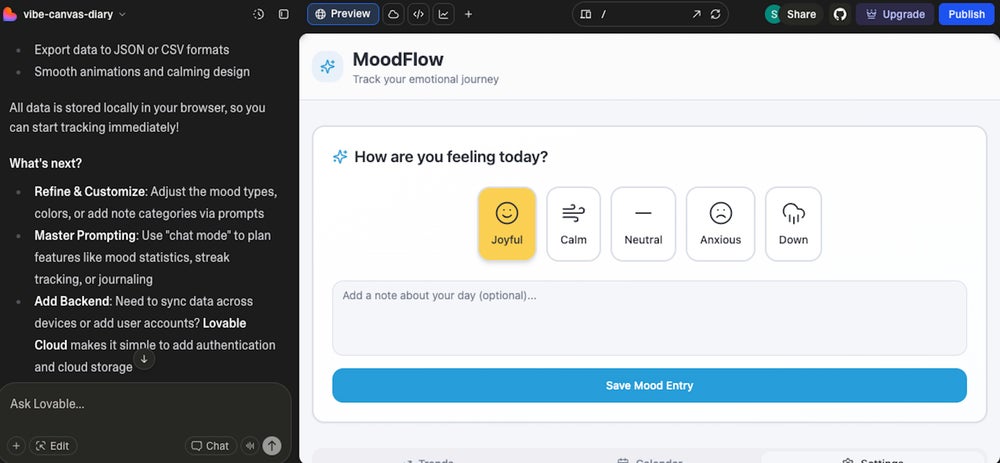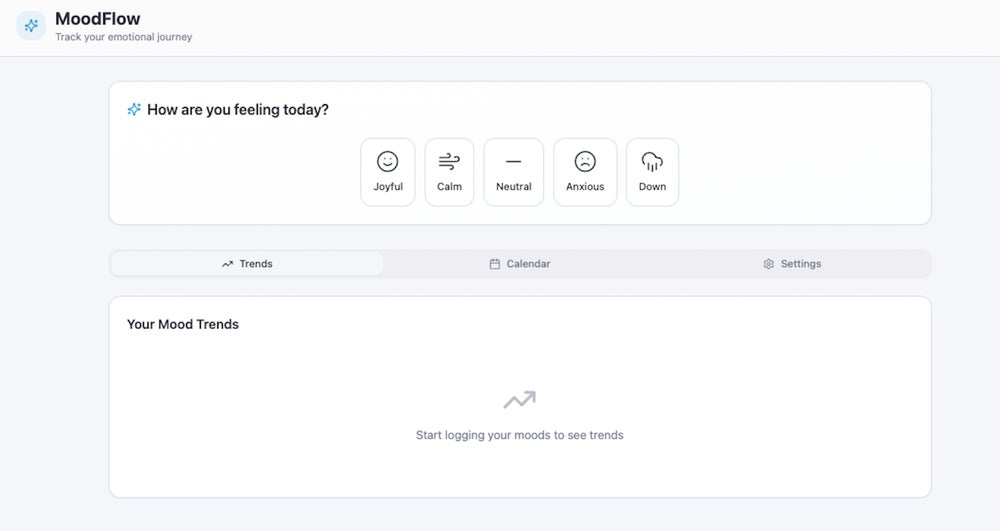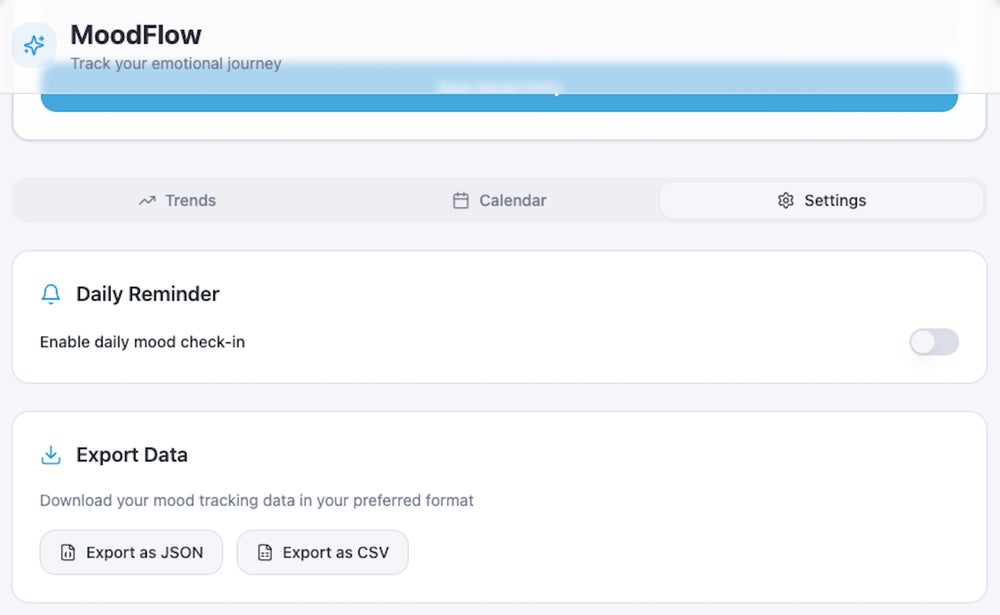Key Takeaways
- Vibe coding is the practice of instructing AI to write code using plain English prompts.
- CEOs like Google’s Sundar Pichai and Nvidia’s Jensen Huang have touted AI’s ability to write code.
- I put vibe coding to the test, creating a mood tracker app using Lovable in under five minutes.
In August, Anton Osika, the 35-year-old CEO of the vibe coding platform Lovable AI, said that artificial intelligence has largely removed the need for “technical know‑how” and “years of training” to create technology products.
AI now allows people to “go from idea to working product without ever touching a formal CS [computer science] education,” Osika told Business Insider.
The key is vibe coding, or using AI coding assistants like Lovable, Cursor, and Replit to turn written prompts into code. Even Google CEO Sundar Pichai admitted in June to “vibe coding” his own website for fun.
Nvidia CEO Jensen Huang said in the same month that AI now enables non-technical users to write code by giving prompts in plain English. AI is the “great equalizer” when it comes to bringing ideas to life with code, he said.
Related: Should High School Students Still Learn to Code? ‘Absolutely,’ Says OpenAI Engineer
Can anyone vibe code, or is the practice just for CEOs? I put that to the test by vibe coding my own app.
Vibe coding a mood tracking app
I’m a reporter for Entrepreneur, covering everything from small businesses to tech giants. While I do have some familiarity with basic coding from college, it’s been years since I last coded something. I chose the Lovable platform because it’s beginner-friendly and has a free plan. I signed up with an email address and password, and immediately got started.
I wanted to create a simple mood-tracking app that lets users log their moods and view a chart of their mood trends over time. The app should have the option to export mood data and set daily reminders for mood check-ins.
Related: I Designed My Dream Home For Free With an AI Architect — Here’s How It Works
I gave Lovable the following prompt: “Users log moods and see color‑coded charts showing emotional trends over time. Add reminders and data export features.”
After thinking for 20 seconds, Lovable promised to “create a beautiful mood tracking app with emotional trend visualization, reminders, and data export!”
A few minutes later, the app was ready. It featured quick mood logging with five emotional states (joyful, calm, neutral, anxious and down), an interactive dashboard with mood trend charts, a color-coded calendar view, a daily reminder system and the option to export data to JSON/CSV. Lovable informed me that all data is stored locally in the user’s browser.
Related: I Tried 3 AI Headshot Generators and There Was a Clear Winner
The AI code assistant even gave the app a name: MoodFlow. The app was ready to publish in under five minutes, including the time it took to sign up for Lovable.



Here’s a link to the published app: https://vibe-canvas-diary.lovable.app.
I would need to test the app for a few months to really see how good it is at tracking my mood and to see if the trends and calendar tabs populate effectively, but from what I can tell so far, it’s working well. While the app I created was simple, it could still serve as an effective mood tracker.
I’m not the only one tapping into AI to create apps without manually writing a single line of code. In February, New York Times tech columnist Kevin Roose wrote that he managed to vibe code an app to help him decide what to pack his son for lunch, just by taking a photo of what was in his fridge.
A few months later, in May, Rishab Jain, a neuroscience student at Harvard University, told NBC News that he vibe coded an app that translates ancient texts into English.
Related: I Tried Airchat, the Hottest New Social Media App in Silicon Valley — Here’s How It Works
The U.S. market for AI code assistants like Lovable was valued at $1.8 billion in 2024 and is expected to reach $12.4 billion within the next decade.
I found it easy and intuitive to vibe code an app, and I could see myself doing it again. It was free and completed in under five minutes — making creating an app almost as simple as downloading one.
Key Takeaways
- Vibe coding is the practice of instructing AI to write code using plain English prompts.
- CEOs like Google’s Sundar Pichai and Nvidia’s Jensen Huang have touted AI’s ability to write code.
- I put vibe coding to the test, creating a mood tracker app using Lovable in under five minutes.
In August, Anton Osika, the 35-year-old CEO of the vibe coding platform Lovable AI, said that artificial intelligence has largely removed the need for “technical know‑how” and “years of training” to create technology products.
AI now allows people to “go from idea to working product without ever touching a formal CS [computer science] education,” Osika told Business Insider.
The rest of this article is locked.
Join Entrepreneur+ today for access.
(Source)

